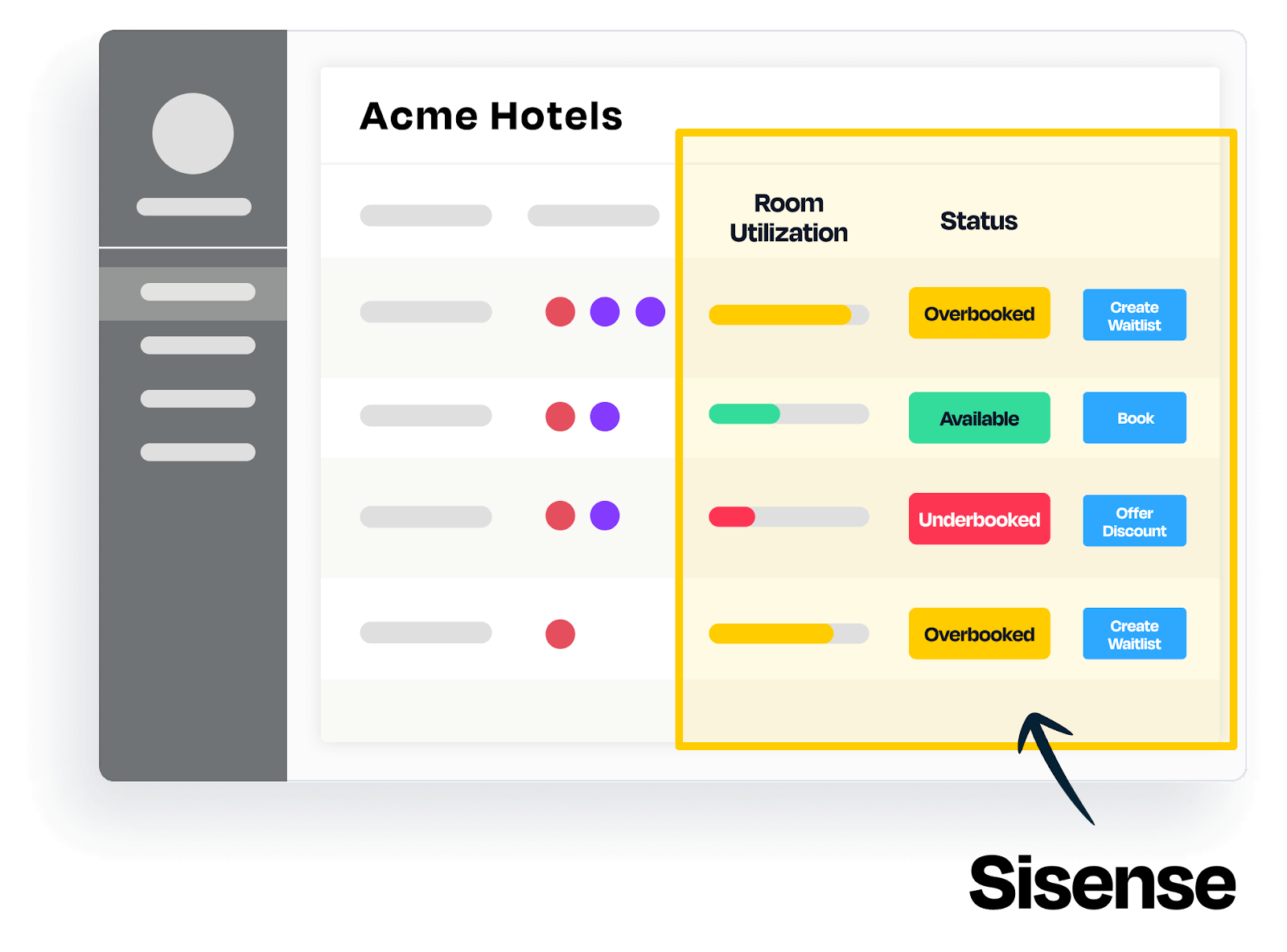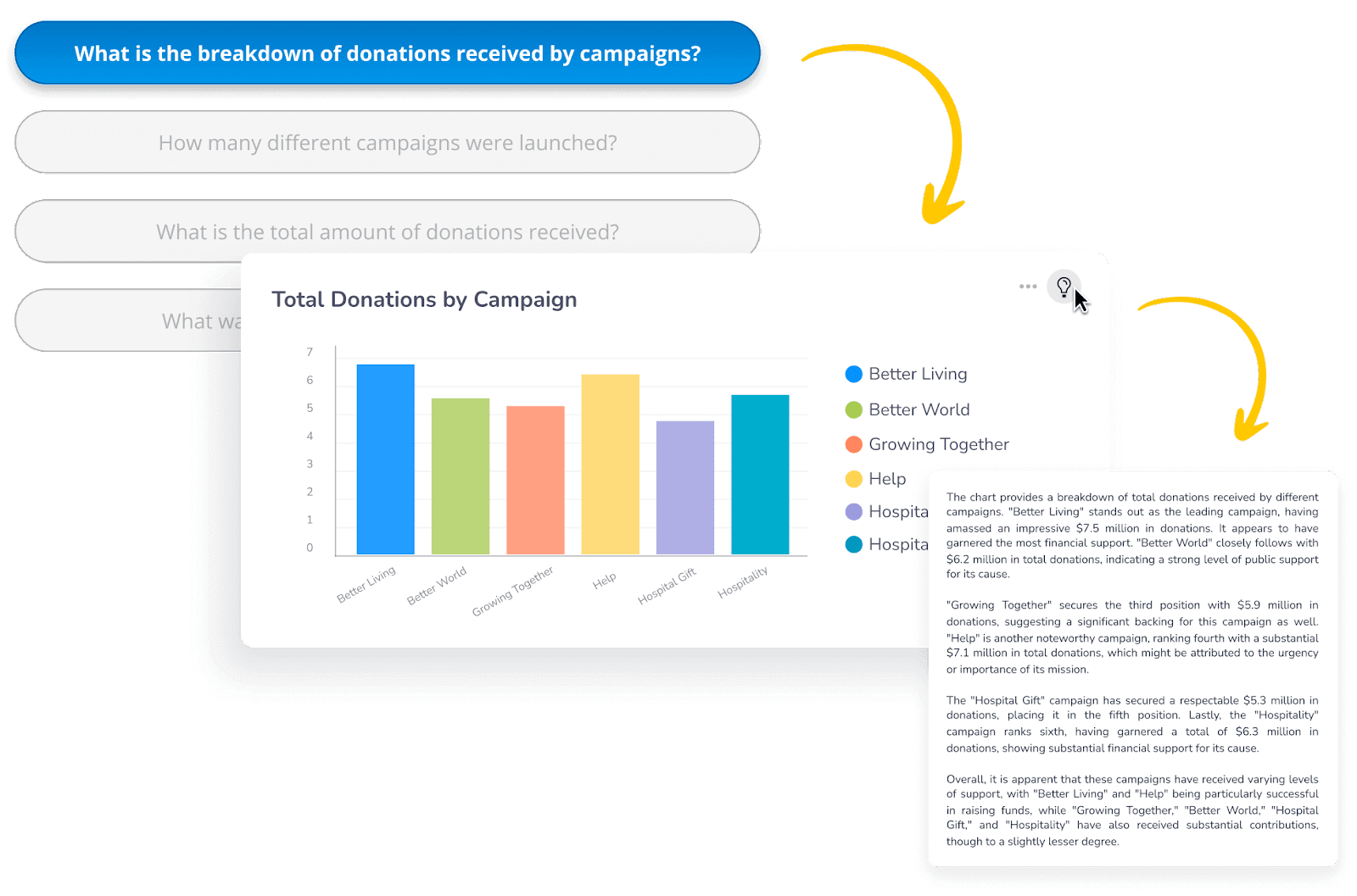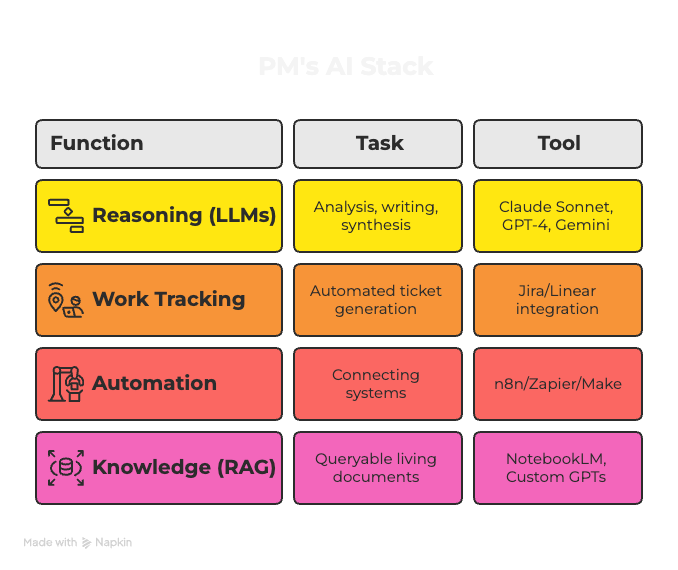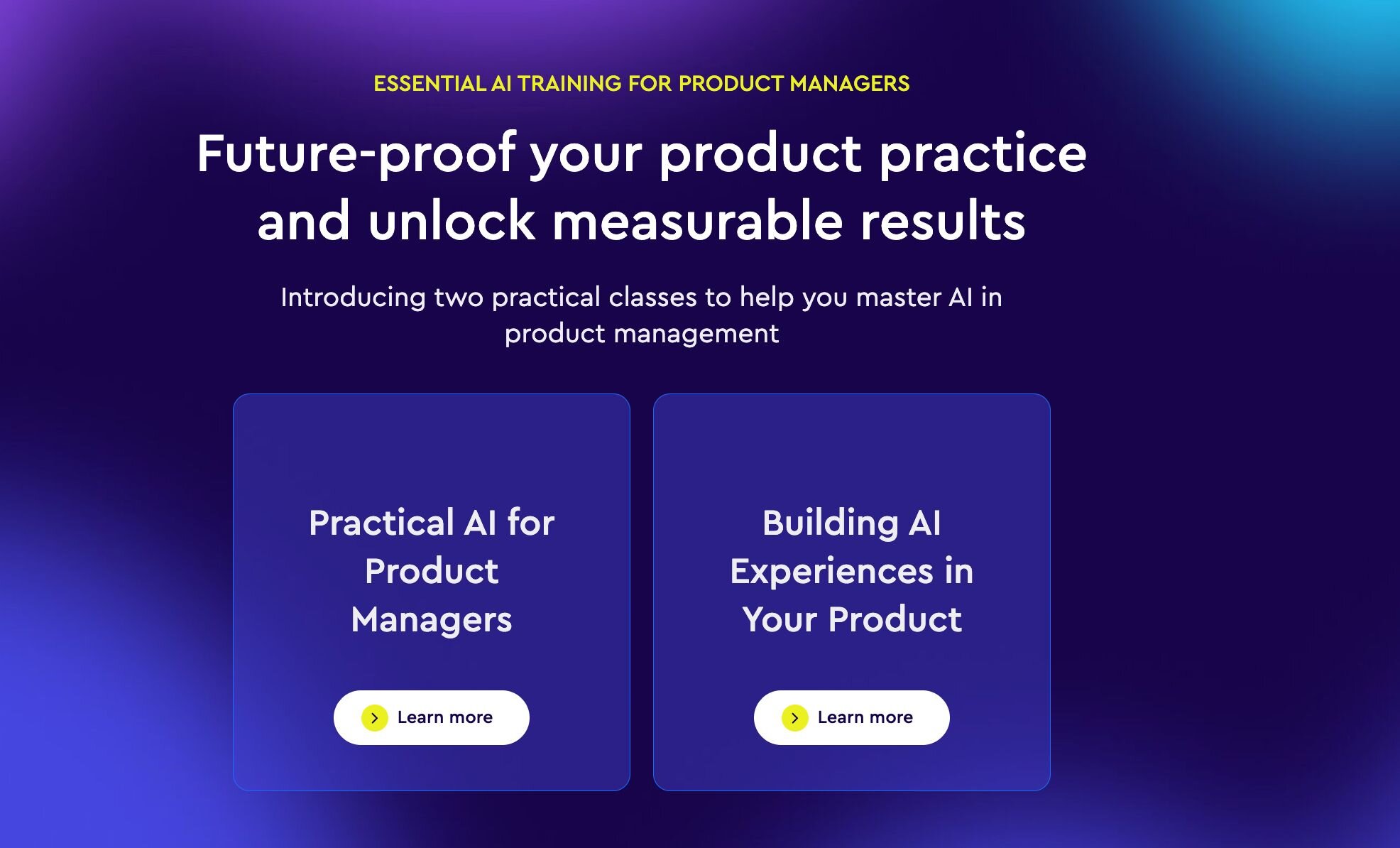Why add AI-powered analytics to your product or portfolio?
Customer expectations around analytics are changing rapidly
Most SaaS products share analytics through dashboards in which users can filter and drill down to focus on the data they care about. However, those dashboards are usually in their own separate product section and take the user out of their workflow.
However, user expectations for identifying analytics insights are rapidly changing toward workstream-embedded experiences. According to Gartner, by 2025, 60% of self-service analytics activities will be initiated, and 30% will be completed entirely within digital workplace applications. Dashboards support reporting use cases well, but business users need to do more than just report the same things over and over: They need analytics to inform the range of decisions they make each day, and others still need analytics to drive their workflows automatically.
Composable analytics vendors—such as Sisense—make it easy to go beyond dashboards by providing composable, AI-powered analytics components that can be woven seamlessly into products through APIs and SDKs.
Users value products that make their job easier
Providing embedded analytics in your users’s workflow allows them to understand what is happening and why—while enabling their work to keep flowing. Combining AI with analytics allows your products to suggest possible actions, making the user’s next steps easier and helping them power on through their day.
For example, a hotel event coordinator can not only see which rooms are available, but they can book a room, create a waitlist, or offer a discount in one click, in the same place. These recommendations are made possible by applying AI to room utilization data.

Creative use of AI-powered analytics increases product differentiation
Providing analytics can be a significant product differentiator if your competitors or industry aren’t there yet, but just adding a dashboard is not a sustainable advantage. Shortly, analytics vendors will be supplying GenAI chatbots, making the analytics table stakes higher and differentiation that much harder.
Product teams must identify and create opportunities for lasting differentiation, Generative AI makes the creation of unique functionalities significantly easier. Based on data, preferences, patterns, and prompts, AI-powered analytics can personalize your users’ experience and provide answers and solutions tailor-made to their needs.
Some AI analytics tools also provide smaller, composable blocks of functionality through APIs and SDKs, allowing for highly flexible experimentation and fine-tuning of your functionality, and pushing the boundaries of creativity. For example, while most GenAI chatbots provide a single, fixed package of features, Sisense lets you build your own chatbot or add individual AI components such as quickstart questions, insights-enriched charts, explanatory text narratives, and data storytelling.
The power of AI analytics can shift your vision of the future for your products and market and allow you to surprise and delight your customers.
Add quickstart questions, insightful images, or explanatory narratives, separately or together in a conversational chatbot, to create unique user experiences that differentiate your product from competitive products.
Three ways AI-powered analytics boost revenue and business targets
As you approach adding analytics into your application, understanding the business case it supports is key. The business case drives build-vs-buy decisions, resource balancing, and product family and roadmaps. Here are the three common business cases:
Customer account expansion and retention
Account expansion and retention is the most common business case for data products. It’s the easiest to envision because it's just an extension of your existing business model. Fundamentally, this is a “value pile” strategy—adding blocks of analytics features to your existing product to provide more value to your existing customers. Creating incremental functionality is a good place to start as your product team learns about how to incorporate AI and analytics while also doing continuous customer discovery on what end-users wish they could do with your product. Their requests will reach further as they see what analytics paired with AI can do for them.
New features that add value for your customers lead to more user adoption and increased product use. Healthy accounts where value is understood renew more easily and can often expand through an increased number of users and/or a higher product consumption.
Capturing additional market share
Having a collection of analytics options allows product managers and marketers to create packages using tiered pricing or segment-specific bundles. Both ways of incorporating AI-powered analytics into your product packages can be valuable in maximizing revenue. In research by the Eckerson Group, ISVs say embedded analytics increases the value of their apps by 43% and enables them to charge 25% more on average. That’s pretty exciting.
Creating service tiers is the most common method, especially if you want to position a premium product. Every tier gets some basic analytics, however, the middle tier costs more to get more sophisticated, advanced analytics. And the top tier, with its increased complexity and customizations, costs even more.
Segment-specific bundles can capture markets with the highest willingness to pay. The same base product with a segment-oriented analytics and insights option has more value and can support higher price points. Segment customizations can take many forms like industry metrics, regulatory burdens, or user types, and don’t have to be drastically different from the base package.
Increasing TAM through adjacent or new markets
Take a look at the data you collect through your product and think about who else cares about it. In most cases, there are adjacent uses for the same data set. For most business systems, there is an operations person who wants to know if systems and workflows are working and efficient. They may also want to know how to make things smoother or where else and how else they can use the application. Recommendations are easily provided with AI analytics. The operations use is adjacent to the core, but adds to the product and can drive additional usage.
As an example, Salesforce may have started with Sales Cloud, but customer data is interesting to Customer Support and Customer Service as well. To capture the adjacent market, they built Service Cloud. And in Service Cloud, data such as customer happiness, purchase history, and usage, leads back to Sales Cloud alerts for sales to follow up for an up-sell or cross-sell opportunity.
Elevating end-user experience with AI-powered analytics
AI can activate analytics to move beyond the descriptive “What happened?” into the predictive and prescriptive “Why?”, “Will it happen again?”, and “What do I do about it?”. Diagnostic tools can suggest the possible data sources driving behavior, or complete a root cause analysis on anomalies. Evaluating trends can predict future outcomes, helping you plan for the best, worst, and most likely futures. Recommendations provide suggestions of the next actions a user could take, while GenAI narratives explain the insights shown in charts and graphs. And in the latest craze, conversational AI chatbots allow a whole new way for end users to interact with data within your applications.
Products can show easily understood visuals and the associated trend analysis using advanced analytics and natural language generation (NLG).
What AI-powered analytics can do is only limited by a product team’s creativity. And with new tools like Sisense’s Compose SDK, the technology can be assembled together and woven seamlessly into your application—letting the UI and UX stay in the forefront and keeping the power under the hood.
To learn more about how Sisense’s AI-powered analytics can boost your product retention and expansion, boost your product value, or help you find new ways to monetize your data, request a demo with one of their experts.









